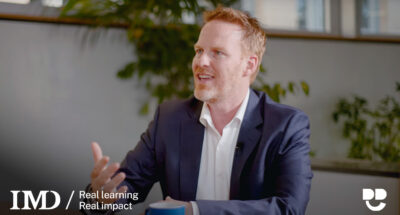I like that. Some folks hesitate to show vulnerability because they think it’s a weakness, but it’s a strength if you show a path forward. How do you re-open curiosity for senior experts who’ve been around forever and might think, “I already know all I need”? Is it possible?
Absolutely. The best learning is on a team. It might be a leadership team or a client-serving team. They bond over discovering new ideas. That experience becomes more sustainable because they do it together. And if the top leader creates urgency – explains the “why” and the purpose – nobody feels singled out. It’s not, “Bob, your expertise is obsolete.” It’s, “All of us need to explore the next steps.” That’s why setting that sense of urgency from the top is critical. We have a “Wave Space” experience – bringing leadership teams into new scenarios with new tech in a 360-degree setting. It sparks curiosity. You see them standing there, minds blown, realizing they’re experts in one corner but know nothing about adjacent fields. It’s scary but also freeing. Then, you absorb everything like a sponge. If more leaders embraced that, we’d have real transformation. Authenticity, openness, and curiosity – that’s the recipe. A leadership team that goes through that experience is tighter afterward. Everyone claims a piece of the new knowledge. A sense of possibility. That’s powerful. Executive teams that do this are stronger.
Another side to leadership is the ability to endure deep discomfort or even emotional pain. Can you expand? For example, restructuring can be very painful.
Sure. Companies are laying off thousands of people. It’s devastating for those let go and also for the leadership team that survives. You lose part of your workforce – it’s like cutting off an arm. It’s traumatic. You have to re-form that team, acknowledge what’s happened, and redistribute responsibilities. You need closure, an explicit moment where everyone recognizes what’s happened and how to move on. Hiding it under the carpet never works. The best thing is to embrace the issue, learn from it, and come out stronger. Product failures, safety recalls – you name it. The faster you admit the problem and show a path forward, the faster you repair it. If you keep ducking, it drags on.
These vital steps – the reflection and the learning – aren’t measured in quarterly reports, but they’re the lifeblood of an organization.
Right. Humans learn from mistakes, and so can companies, especially in professional services. You want the client to come back because your team knows them. It’s more efficient and meaningful. You need to remember that loyal base as you innovate.
Let’s do some fun questions before we wrap up. First, you mentioned vulnerability. How do you define it?
Being able to say what you don’t know and being open to figuring it out.
That’s lovely. What do you do when you’re afraid?
I do what I advise our young partners: consult, consult, consult. Talk with your team, your friends, and your colleagues. They might know what you don’t. That’s how you figure out solutions. That’s how you lead together.
We all use ChatGPT these days. What’s your latest favorite use case?
Benchmarking real estate prices and brainstorming Christmas gift ideas. For instance, ChatGPT suggested a cocktail-mixing machine – very cool. The more advanced your prompts, the more interesting the results, but watch for hallucinations.
Finally, what’s the latest movie or show you have loved?
I saw Wicked last week – three hours of pure wonder with my 17-year-old son. We had a blast.






